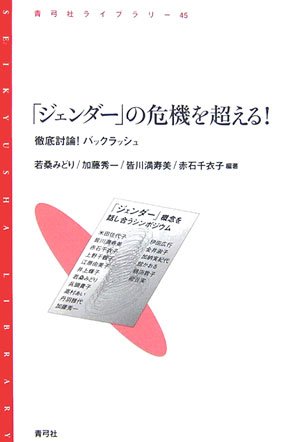4 0 0 0 OA 北西太平洋プレートの地球化学
- 著者
- 木村 純一 宮崎 隆 常 青 バグラロフ ・ボグダン 仙田 量子
- 出版者
- 公益社団法人 東京地学協会
- 雑誌
- 地学雑誌 (ISSN:0022135X)
- 巻号頁・発行日
- vol.126, no.2, pp.163-179, 2017-04-25 (Released:2017-06-12)
- 参考文献数
- 71
- 被引用文献数
- 4 4
The source mantle of the ocean crust on the Pacific Plate is examined using Pb–Nd–Hf isotopes and compared to a global isotope database of ocean basalts. The entire eastern half of the Pacific Plate, formed from an isotopically distinct Pacific mantle along the East Pacific Rise and the Juan de Fuca Ridge, largely remains on the seafloor. Conversely, the western half of the Pacific Plate becomes younger westward and is thought to have formed from the Izanagi–Pacific Ridge (IPR). The ridge subducted along the Kurile–Japan–Nankai–Ryukyu (KJNR) Trench at 70-65 Ma and currently forms the leading edge of the Pacific Plate stagnated in the mantle transition zone beneath China. The subducted IP formed from both Pacific and Indian mantles. Isotopic compositions of the basalts from borehole cores of 165-130 Ma in the western Pacific show that these are of Pacific mantle origin. However, the scraped-off ocean floor basalts (80-70 Ma) in the accretionary prism along the KJNR Trench have Indian mantle signatures. This indicates: (1) the younger western Pacific Plate of IPR origin formed from the Indian mantle, (2) the Indian–Pacific mantle boundary has been stationary in the western Pacific at least since the Cretaceous, and (3) the IPR moved over the boundary. The Indian mantle is thought to have formed from a depleted MORB source mantle (DMM) due to an ancient melt depletion event (2-3 Ga) and subsequent isotopic growth and mixing with a sub-continental lithospheric mantle. In contrast, the Pacific mantle originated from a primitive mantle at 3-1.5 Ga followed by isotopic growth alone. These different formation processes may relate to the formation of the supercontinent and superocean where the Indian mantle was formed in a sub-continental environment whereas the Pacific mantle formed in an oceanic ridge environment.
4 0 0 0 ありがとう千夏 : 性同一性障害/競艇選手・安藤大将物語
- 著者
- 熊野 健志 比嘉 邦彦
- 出版者
- 日本テレワーク学会
- 雑誌
- 日本テレワーク学会研究発表大会予稿集 (ISSN:24331953)
- 巻号頁・発行日
- vol.14, pp.6-11, 2012-06-30 (Released:2018-06-11)
Telework has been diffusing in various industries, and the focus of the use of Telework is shifting from employee welfare to management innovation. Although Telework is believed to be a useful tool for management innovation including business continuity, what makes Telework so effective and how Telework should be used for that purpose have not been clarified yet. The strength of Telework cannot be explained by the specification of its infrastructure alone. The governance of human resource under Telework, i.e., Tele-management, will be critical for management innovation with Telework. In this study, one of the most powerful organizations on the planet, the U.S. Marine Corps, is studied for its human resource management, and hints for Tele-management will be extracted.
- 著者
- 都築 忠義
- 出版者
- 科学評論社
- 雑誌
- 精神科 (ISSN:13474790)
- 巻号頁・発行日
- vol.9, no.3, pp.242-245, 2006-09
4 0 0 0 OA 官報
- 著者
- 大蔵省印刷局 [編]
- 出版者
- 日本マイクロ写真
- 巻号頁・発行日
- vol.1910年02月23日, 1910-02-23
4 0 0 0 IR セノオ楽譜からみる大正時代の洋楽受容
- 著者
- 越懸澤 麻衣
- 出版者
- 東京藝術大学音楽学部
- 雑誌
- 東京藝術大学音楽学部紀要 (ISSN:09148787)
- 巻号頁・発行日
- vol.41, pp.29-43, 2015
4 0 0 0 OA 書評
- 出版者
- 数理社会学会
- 雑誌
- 理論と方法 (ISSN:09131442)
- 巻号頁・発行日
- vol.33, no.1, pp.156-163, 2018 (Released:2018-08-03)
4 0 0 0 OA 失敗を笑われることに伴う感情に関する基礎的検討
- 著者
- 白井 真理子 伊藤 理絵
- 出版者
- 日本笑い学会
- 雑誌
- 笑い学研究 (ISSN:21894132)
- 巻号頁・発行日
- vol.25, pp.107-119, 2018 (Released:2018-12-27)
近年笑われることを極度に恐れる「笑われ恐怖症(gelotophobia)」という概念が報告されている。笑われ恐怖症を発症する背景には,感情が深く関わっていることが指摘されているにも関わらず,そもそも笑われることによりどのような感情が生じるのかについては,実証的に検討されていない。本研究の目的は,失敗を笑われるという不快な状況に至るまでに生じる感情について,探索的に検討することである。大学生25名(男性17名,女性8名,平均年齢19.92歳)を対象に,登場人物が転んで泣く(転倒条件)・転んで友人に見られて泣く(友人条件)・転んで友人に見られて笑われて泣く(笑われ条件)の3条件を提示し,質問紙により各条件で生じた感情について自由記述を求めた。すべての条件で報告された感情は,恥,痛み,悲しみ,怒り,驚きの5つであり,最も多く報告された感情は恥であった。本調査の結果より,失敗を笑われることに伴う感情は様々であったことから,笑われることで生じる感情の複雑さが示唆された。これまで笑われ恐怖症の核となる感情として,恥の感情が深く関わっていることが指摘されてきたが,今後は,恥以外の感情も含めて明らかにする必要がある。
4 0 0 0 性同一性障害に対する包括的医療の実践:精神科神経科での経験
4 0 0 0 OA 情報伝達型の日本語文章に現れるあいまい表現の類型化とその改善例
- 著者
- 阿部圭一
- 雑誌
- デジタルプラクティス
- 巻号頁・発行日
- vol.5, no.1, pp.70-79, 2014-01-15
あいまいな日本語表現について,できるだけ網羅的な考察を行うことが本論文の目的である.会議録,連絡メモ,事務的なメール,仕様書,マニュアル,レポート,論文,その他の「情報伝達型」の文章・文書において,あいまいな日本語表現はできるかぎり避けるべきである.筆者はこれらに共通する情報伝達型の日本語文章作成の指導を長年行ってきた.その結果の一部として,本論文では,日本語においてどのようなあいまい表現がよくあるかを類型化し,具体例と改善例を示す.
4 0 0 0 IR 竹下文子「黒ねこサンゴロウ」論 -伏せられた問題を巡って-
- 著者
- 本田 幸恵
- 出版者
- 尾道大学日本文学会
- 雑誌
- 尾道大学日本文学論叢 (ISSN:1880215X)
- 巻号頁・発行日
- no.5, pp.55-71, 2009-12-31
4 0 0 0 「ジェンダー」の危機を超える! : 徹底討論!バックラッシュ
- 著者
- 若桑みどり [ほか] 編著
- 出版者
- 青弓社
- 巻号頁・発行日
- 2006
- 著者
- 矢野 里佳 浦島 創 西村 良二
- 出版者
- 一般社団法人日本心身医学会
- 雑誌
- 心身医学 (ISSN:03850307)
- 巻号頁・発行日
- vol.46, no.5, 2006-05-01
- 著者
- 大島 俊之
- 出版者
- 有斐閣
- 雑誌
- 民商法雑誌 (ISSN:13425056)
- 巻号頁・発行日
- vol.134, no.3, pp.503-508, 2006-06
4 0 0 0 性同一性障害の臨床 (特集2 性同一性障害(GID)の診かた)
- 著者
- 塚田 攻
- 出版者
- 科学評論社
- 雑誌
- 精神科 (ISSN:13474790)
- 巻号頁・発行日
- vol.9, no.3, pp.236-241, 2006-09
- 著者
- 志田 哲之
- 出版者
- 人間・エイジング・社会編集委員会
- 雑誌
- 人間・エイジング・社会
- 巻号頁・発行日
- no.6, pp.45-54, 2004
4 0 0 0 百衲本二十四史校勘記
- 出版者
- 商務印書館
4 0 0 0 OA 占領期北海道の総合雑誌(一)
- 著者
- 水溜 真由美
- 出版者
- 北海道大学文学研究院
- 雑誌
- 北海道大学文学研究院紀要 (ISSN:24349771)
- 巻号頁・発行日
- vol.158, pp.71-116, 2019-07-31
4 0 0 0 OA 汎用ロボットプラットフォームAEROの競技会を通じた継続的開発評価
- 著者
- 矢口 裕明 溝花 弘登 堀 慎太郎 笹渕 一宏 長濱 虎太郎 齋木 拓也 椎木 靖人 稲葉 雅幸
- 出版者
- 一般社団法人 日本ロボット学会
- 雑誌
- 日本ロボット学会誌 (ISSN:02891824)
- 巻号頁・発行日
- vol.37, no.4, pp.319-329, 2019 (Released:2019-05-23)
- 参考文献数
- 40
- 被引用文献数
- 1
In this paper we describe a continuous development and evaluation of multi purpose platform robot AERO via robot competitions. We participated to 4 robot competitions requiring different task with human size semi humanoid robot AERO, has same basic structure. For many types of competition tasks, the robot was designed as simple, robust, small and lightweight, furthermore it can be change parts for another situation of task. The versatility of the robot platform was increased from continuation of task analyisis, consideration of requirements, and implementation. In this paper we describe a continuous integration of robot design, cycle of task analysis, implemetation and integration, via robot competition.


